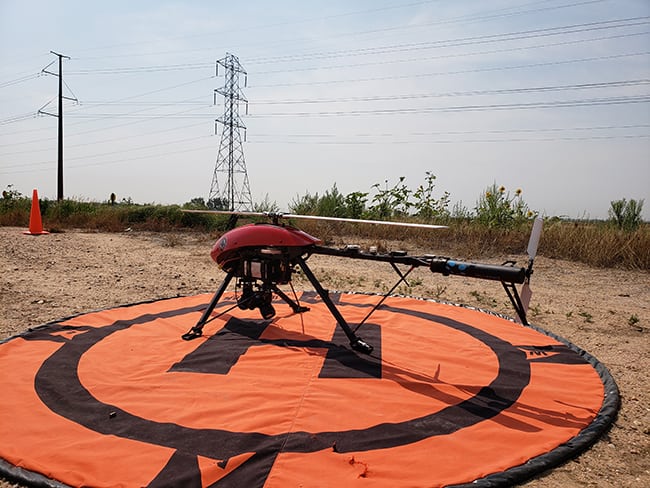In an Industry First, Xcel Energy Flies a Drone BVLOS
Xcel Energy on September 12 launched a drone to inspect electric power lines near Fort St. Vrain Generating Station in Platteville, Colorado—marking the first flight by a U.S. utility beyond visual line of sight (BVLOS) during ongoing inspections.
Xcel on Wednesday launched a 35-pound drone that is equipped with two cameras, as local, state, and federal officials looked on. The drone will collect data on the condition of power lines and transmission towers near Denver. The utility plans flights along a 50-mile route.

“Today’s flight takes us a step closer to fully integrating unmanned aircraft into our operations,” Ben Fowke, chairman, president and CEO of Xcel Energy, said in a statement. “This innovative technology is revolutionizing our work by improving the safety, efficiency and cost effectiveness of maintaining and protecting the grid for our customers.”
As POWER reported in May, citing a report from drone technology provider PrecisionHawk, drones have emerged as a “transformative force for business intelligence and operations,” the key to unlocking the full potential of unmanned aircraft systems (UASs) are regulations allowing drones to fly BVLOS. As opposed to visual line of sight, or VLOS flights, which are performed with the drones within the pilot’s line of sight, BVLOS flights are performed out of visual range.
Industry has long championed BVLOS flights, noting that their capabilities enable a drone to cover far greater distances significantly improving the economics and feasibility of many commercial operations.
According to PrecisionHawk, businesses that fly BVLOS can reap a number of efficiency and safety benefits because BVLOS flights allow drones to collect more data in fewer deployments. “BVLOS flight unlocks the next generation of surveying applications (and not just for drones). By enabling workers to operate drone-based sensors remotely, businesses can collect data from places they never could before. And everyone—workers, businesses, and the customers they serve—benefit from an overall improvement in safety,” Thomas Haun, senior vice president of enterprise solutions at PrecisionHawk, said in May.
However, obtaining a BVLOS Part 107 waiver from the Federal Aviation Administration (FAA) isn’t easy. Waivable sections of part 107 include sections that govern visual line of sight aircraft operation (107.31); visual observer rules (107.33); operation of multiple small UAS (107.35); daylight operation (107.29); operation over people (107.39); and operation in certain airspace (107.41).
So far, Xcel Energy is the only utility that has launched BVLOS flights. Xcel secured a certificate of BVLOS waiver owing to uncommon circumstances. (For an in-depth story on Xcel’s efforts, see: “On the Horizon: Utility Drone Flights Beyond Visual Line of Sight” in POWERnews.)
“Leading the development of unmanned aircraft builds on our longstanding commitment to safety for our workers, the public and the environment. This is especially important in Colorado where inspecting power lines in the mountains and remote locations is challenging work,” said David Eves, executive vice president, group president-utilities, Xcel Energy, on Wednesday.
When the transmission inspections are completed near the Denver area, Xcel and its partners plan to work with the FAA to “extend these operations in other states where the company provides electric service.” The company said it surveys more than 320,000 miles of electricity and natural gas infrastructure to ensure the safety and reliability of its energy system.
—Sonal Patel is a POWER associate editor (@sonalcpatel, @POWERmagazine)